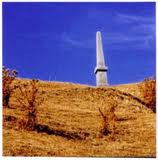RUSSELL, BRUCE - Gilded Splinters
Couldn't load pickup availability
After countless false starts and production problems, we are finally\r\nable to offer a specially packaged edition of this long awaited release\r\nby BRUCE RUSSELL. Hand assembled digipak version of this CD (not a CDR).Iin the\r\ncoming months it will be issued in a jewel cased edition. About the\r\nProject: I have been interested in the use of sound recordings to make\r\nmusic for a long time. In the early 1980s one of the things that drew\r\nme to the work of groups such as Cabaret Voltaire, The Fall and This\r\nHeat was their use of recordings as an element in their work, and as a\r\nway of restructuring played pieces once they had been recorded. In my\r\nown work, I started making tape works from day one, buying my first open\r\nreel tape machine in 1983, the same year I bought my first electric\r\nguitar. The first Dead C. album included The Wheel and Mutterline,\r\nboth of which I constructed from tapes [1987]. Later about half of the\r\nthird Handful of Dust album; From a Soundtrack to the Anabase of\r\nSt.John Perse, was constructed in the studio [1995]. When I began to\r\nrecord under my own name, one of the things I wanted to focus on was\r\ntape work, as opposed to documentation recordings of live\r\nimprovisations, which most of my other work has been. My first solo\r\nsingle was produced by the simple expedient of halving the tape speed,\r\nthereby doubling the beauty of the original ultra-lo-fi recording. A\r\ngreat boost to my resolve in this area was given by Ralf Wehowskys\r\ninvitation in 1996 to participate in what became the Tulpas project.\r\nHis faith in me gave me confidence to consider my work as a form of\r\ncomposition, and has led directly to this album. In this regard the\r\nsupport of Matthew Leonard has also been very helpful. My plan was to\r\ncompile examples of my tape work over the last few years, as a way of\r\nshowing the different approaches and developing methodologies that I\r\nhave employed. Originally I envisaged a double CD, but this has proven\r\nto be both too expensive and ultimately too hubristic. Making these\r\nrecordings has been a learning process, but a very satisfying one. My\r\nworking practices have often been deliberately primitive and brutal, and\r\nI make no apology for that. It is the ideas and their expression that\r\nshould be of interest, not merely questions of technique. It remains\r\nonly to note the inspiring example of many more illustrious names in\r\nthis genuinely Twentieth Century art form. I will not compile a list of\r\nnames, as these lists have a way of becoming almost too famous, but\r\nnational pride compels me to mention the late Douglas Lilburn. He\r\nfounded, in 1966 at Victoria University of Wellington, the Southern\r\nHemispheres first Electronic Music Studio. Recently his magnificent\r\nanalogue electronic works have entered the digital domain in a long\r\noverdue re-edition. Hurrah! - Bruce Russell, Lyttelton 2004.


